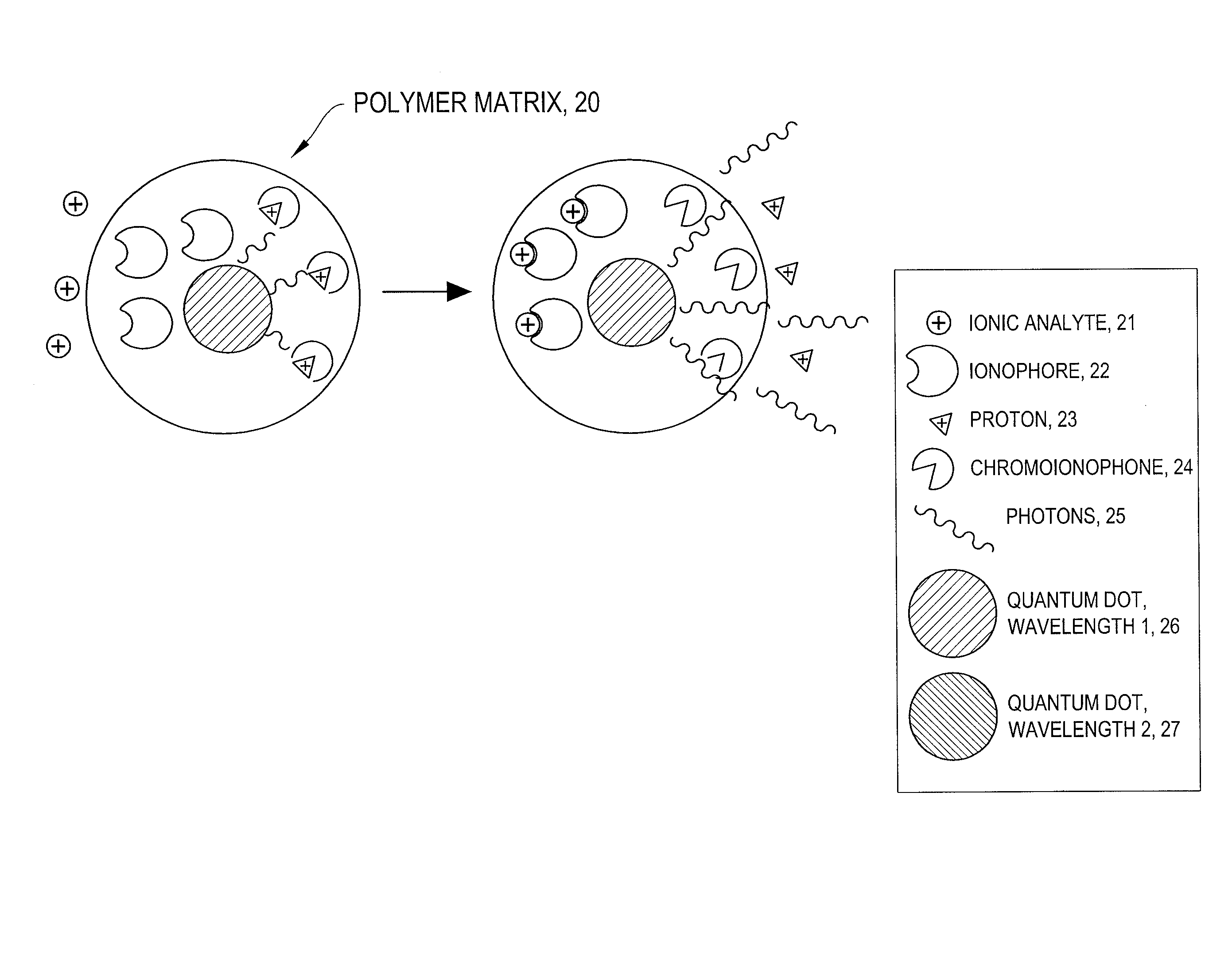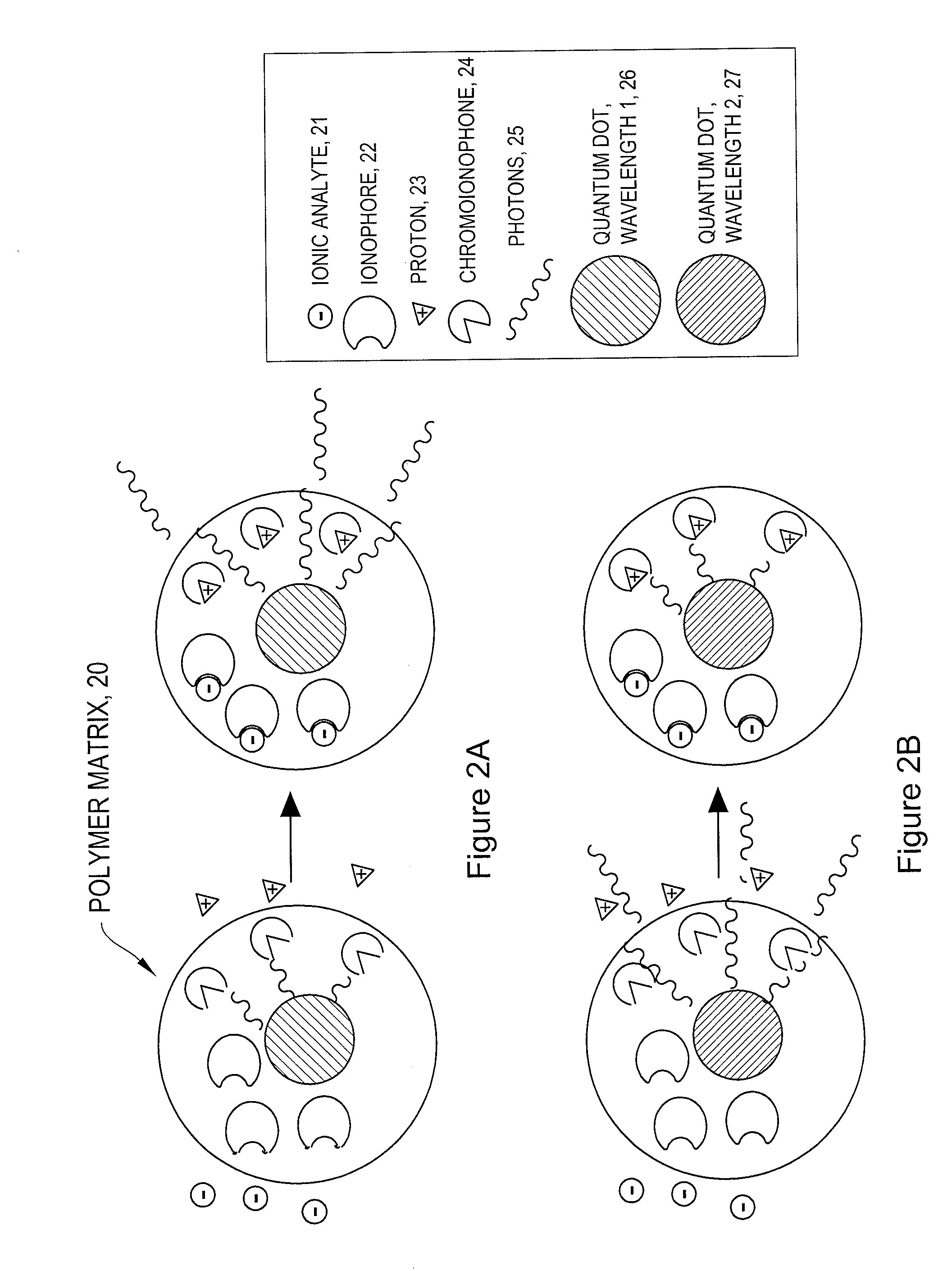Intracellular nanosensors and methods for their introduction into cells
a nanosensor and intracellular technology, applied in the field of intracellular nanosensors and methods for their introduction into cells, can solve the problems of ineffective intracellular analytes monitoring sensors or other deterioration of sensitivity, and achieve the effect of attenuating intensity
- Summary
- Abstract
- Description
- Claims
- Application Information
AI Technical Summary
Benefits of technology
Problems solved by technology
Method used
Image
Examples
examples
[0069]Ion-Selective Polymer Solution. The ion-selective polymer solution was made from the following components: 30 mg High Molecular Weight Polyvinyl Chloride, 60 mg Bis-2-Sebacate, 0.1 mg Sodium Ionophore X, 0.1 mg Sodium tetrakis[3,5-bis(trifluoromethyl)phenyl]borate, and 0.1 mg Chromoionophore I. The combined reagents were stirred in 500 μL of tetrahydrofuran (THF) to afford a homogenous solution.
[0070]Ion-Selective Sensor Fabrication. Quantum dots (ITK organic 655, Invitrogen) were flocculated in a methanol / isopropanol mixture with the addition of toluene in a 1:1 (v:v) ratio of toluene:quantum dot solution. The supernatant was removed and the quantum dots were resuspended in THF containing 3.3 mM 1-decanethiol. To the quantum dot solution (0.2 nMoles) was added the ion-selective polymer solution (17.2 nMoles Chromoionophore I,50 μl) and the mixture was stirred.
[0071]Immobilized Polymer Matrix of Sensors. To form an immobilized polymer matrix of sensors, 1 μl of the polymer / qua...
PUM
| Property | Measurement | Unit |
|---|---|---|
| diameter | aaaaa | aaaaa |
| diameter | aaaaa | aaaaa |
| diameter | aaaaa | aaaaa |
Abstract
Description
Claims
Application Information
 Login to View More
Login to View More - R&D
- Intellectual Property
- Life Sciences
- Materials
- Tech Scout
- Unparalleled Data Quality
- Higher Quality Content
- 60% Fewer Hallucinations
Browse by: Latest US Patents, China's latest patents, Technical Efficacy Thesaurus, Application Domain, Technology Topic, Popular Technical Reports.
© 2025 PatSnap. All rights reserved.Legal|Privacy policy|Modern Slavery Act Transparency Statement|Sitemap|About US| Contact US: help@patsnap.com



